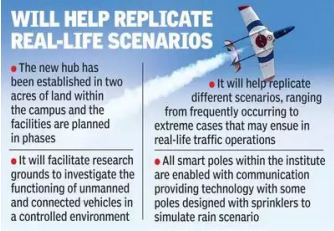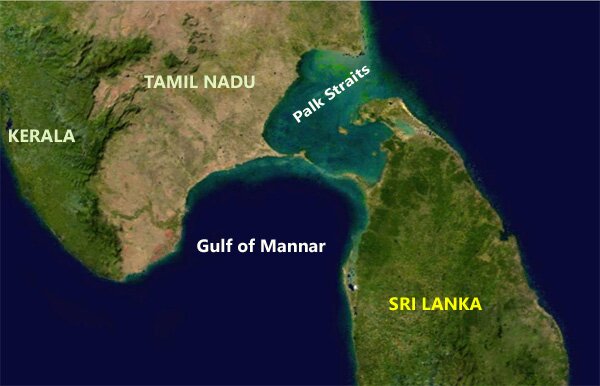International Relations
Indian Missions in Estonia, Paraguay and the Dominican Republic
Why in News
The Union Cabinet has approved the opening of 3 Indian Missions in Estonia, Paraguay and Dominican Republic in 2021.
Key Points
- Objective:
- To build a conducive environment for India’s growth and development through partnerships with friendly countries.
- Expected Benefits:
- Opening of Indian Missions in these countries will help expand India’s diplomatic footprint, deepen political relations, enable growth of bilateral trade, investment and economic engagements, facilitate stronger people-to-people contacts, bolster political outreach in multilateral fora and help garner support for India’s foreign policy objectives.
- Indian missions in these countries will also better assist the Indian community and protect their interests.
- Enhancement of India’s diplomatic presence will, inter-alia, provide market access for Indian companies and bolster Indian exports of goods and services.
- This would have a direct impact in augmenting domestic production and employment in line with the goal of a self-reliant India or ‘Atmanirbhar Bharat’.
- Relations with the 3 Countries:
- Estonia:
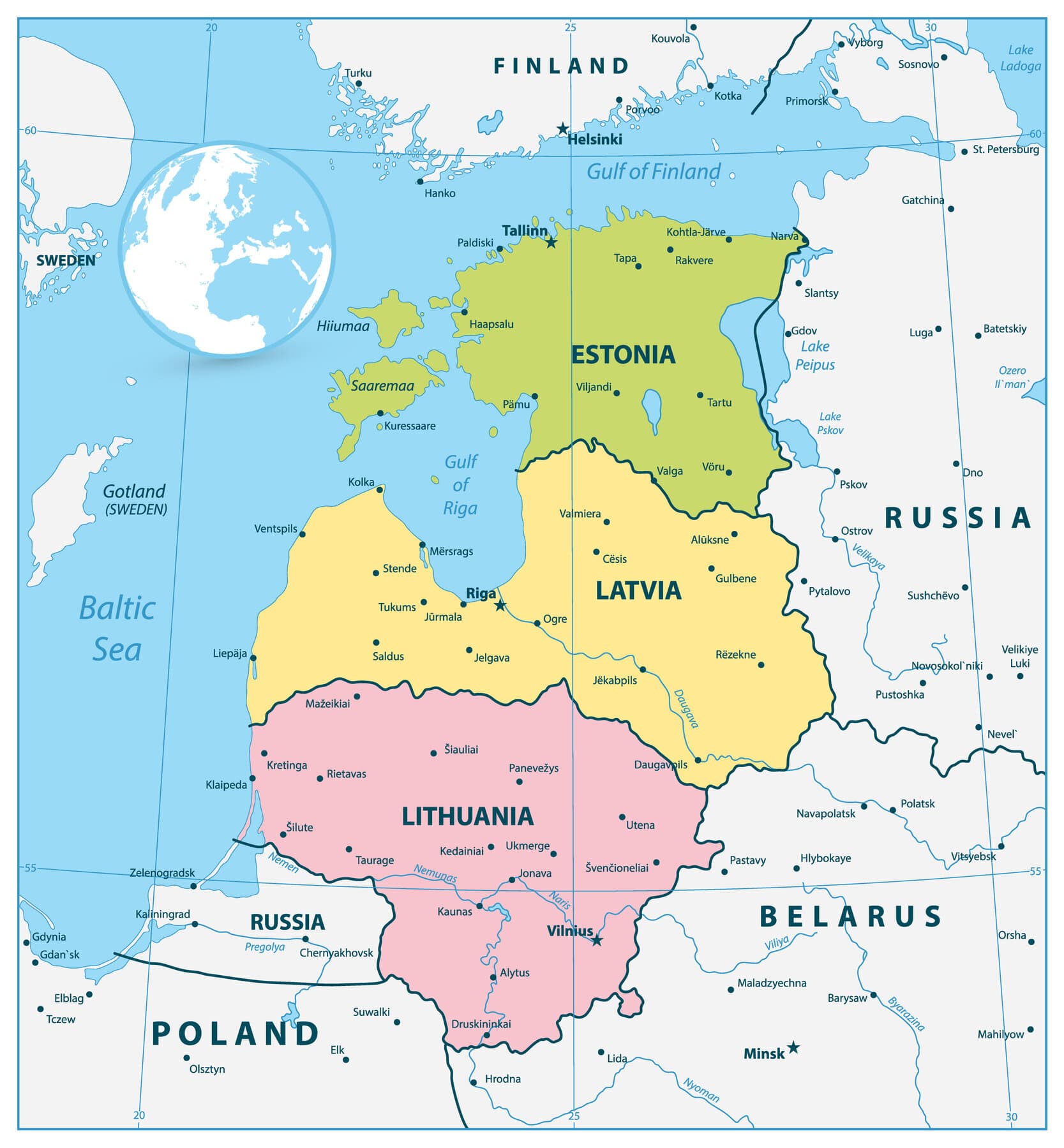
- It is the northernmost of the three Baltic states.
- Baltic states, northeastern region of Europe containing the countries of Estonia, Latvia, and Lithuania, on the eastern shores of the Baltic Sea.
- The Baltic region is not rich in natural resources. Though Estonia is an important producer of oil shale, a large share of mineral and energy resources is imported.
- It welcomed the decision saying it would strengthen ties in trade and cybersecurity in particular.
- The decision had been awaited since 2013, when Estonia set up its embassy in Delhi, while India has dealt with it through its embassy in neighbouring Finland.
- India and Estonia will also serve together in the Security Council next year.
- There is significant room for enhanced economic engagement in information technology, cyber security, e-governance and block chain.
- Total bilateral trade in 2018-19 was 172.53 USD million, an increase of 22.5% from 2017-18.
- It is the northernmost of the three Baltic states.
- Paraguay:
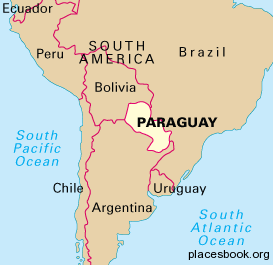
- It is a landlocked country in south-central South America.
- Rivers provide access to the Atlantic Ocean and serve as sites for the hydroelectric power plants that have made Paraguay one of the world’s largest exporters of hydropower.
- Paraguay is a member of MERCOSUR.
- The Southern Common Market (MERCOSUR for its Spanish initials) is a regional integration process, initially established by Argentina, Brazil, Paraguay, and Uruguay, and subsequently joined by Venezuela and Bolivia.
- India has a preferential trade agreement with MERCOSUR.
- It had set up its mission in Delhi in 2006.
- For the fiscal year 2018-19, India’s exports to Paraguay were valued at USD 161 million, while Paraguay’s exports to India were valued at USD 21 million. Soybean oil accounts for over 90% of Paraguay’s exports to India.
- Dominican Republic:
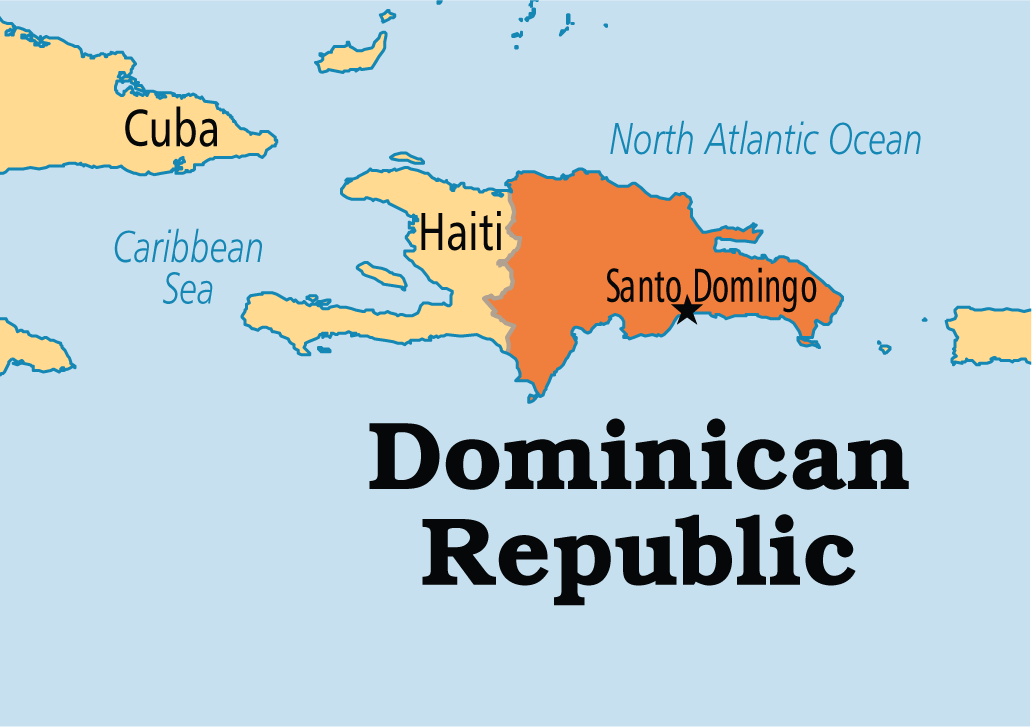
- It is a country of the West Indies that occupies the eastern two-thirds of Hispaniola, the second largest island of the Greater Antilles chain in the Caribbean Sea.
- It had set up its mission in Delhi in 2006.
- India’s exports to the Dominican Republic are small but growing. Bilateral two way trade stands at around USD 120 million.
- Main items of India’s exports are cotton textiles and readymade garments, drugs and pharmaceuticals, furniture, transport equipment, manufactures of metals, chemicals, plastic and linoleum products, tea, processed foods and marine products.
- Estonia:
Science & Technology
TiHAN-IIT: Testbed for Autonomous Navigation Systems
Why in News
The foundation stone of ‘TiHAN-IIT Hyderabad’, India’s first Testbed for Autonomous Navigation Systems (Terrestrial and Aerial) has been laid recently.
Key Points
- Background:
- The Department of Science and Technology (DST) had sanctioned Rs. 135 crores to IIT Hyderabad (IIT-H) under the National Mission on Interdisciplinary Cyber-Physical Systems (NM-ICPS) to set up a Technology Innovation Hub on Autonomous Navigation and Data Acquisition Systems (UAVs, RoVs, etc.)
- The Technology Innovation Hub for Unmanned Aerial Vehicles (UAVs) and Remotely Operated Vehicles (RoVs) at IIT Hyderabad, known as 'TiHAN Foundation' was incorporated as a Section-8 company by the institute in June 2020.
- It is a multi-departmental initiative including researchers from electrical, computer science, mechanical and aerospace, civil, mathematics, and design at IIT-H with collaboration and support from reputed institutions and industry.
- It is a great step towards ‘Atmanibhar Bharat’, ‘Skill India’ and ‘Digital India’.
- TiHAN-IIT:
- It will facilitate research grounds to investigate the functioning of unmanned and connected vehicles in a controlled environment by replicating different scenarios, ranging from frequently occurring to extreme cases that may ensue in real-life traffic operations.
- At present, there is no such testbed facility in India to evaluate the autonomous navigation of vehicles. Therefore, it is envisioned to address this gap by developing a fully functional and exemplary testbed facility dedicated to connected autonomous vehicles (CAVs).
- Connected vehicles use technology to either communicate with each other, connect with traffic signals, signs, and other road items, or obtain data from a cloud. This information exchange helps with safety and improves traffic flow.
- This hub focuses on addressing various challenges hindering the real-time adoption of unmanned autonomous vehicles for both terrestrial and aerial applications.
- Primary focus includes:
- Research & Technology development in the area of Autonomous Navigation and Data Acquisition Systems (UAVs, RoVs).
- Industry Collaborations :
- Joint R&D Initiatives, Consultancy, Technology Outreach Schemes, Training of Industry Personnel, Continuing Education.
- Human resource & Skill development.
- Innovation, Entrepreneurship & Start-up Ecosystem:
- Start-ups and Incubation in the Technology Vertical, Attracting Private Funding (Corporate Social Responsibility, Voluntary Contributions and equity based), Technology Commercialization.
- International Collaborations :
- Academia & Industry, Faculty/Student Exchange Programs.
- Features of TiHAN-IIT:
- Total Area:
- 2 Acres of land has already been allocated in the IIT Hyderabad campus and the facilities are planned in phases.
- Facilities:
- Test Tracks, Emulation of Real-World Scenarios, State of the Art Simulation Technologies, Road Infrastructure, Drone Runways and Landing Area, Mechanical Integration Facility, Centralized Control Room/Ground Control Station, Smart Poles etc.
- Promotion to research:
- The developed test bed will be available for use by all the industries, R&D labs, academia conducting research and development in the broad areas of autonomous navigation.
- Total Area:
National Mission on Interdisciplinary Cyber-Physical Systems
- The NM-ICPS is a comprehensive Mission aimed at complete convergence with all stakeholders by establishing strong linkages between academia, industry, Government and International Organizations. The Mission will work with all the concerned Ministries/Departments to identify their technology needs, develop solutions and technical support in CPS implementation.
- It will secure India's future by creation of a Cyber-Physical System ecosystem.
- Cyber-Physical System (CPS) combines digital/cyber elements with physical objects (e.g. machines, autonomous vehicles) and data with capabilities of communication, data collection & processing, computing, decision making and action.
- CPS is an integrated system involving Sensors, Communication, Actuators, Control, interconnected computing networks and data analytics.
- Few Potential applications: Driverless cars that communicate securely with each other on smart roads, Sensors in the home to detect changing health conditions, etc.
- The Mission has four major activities:
- Technology Development,
- Human Resource & Skill Development,
- Innovation, Entrepreneurship & Start-Up Ecosystem and
- International Collaborations.
International Relations
India-Sri Lanka Joint Working Group on Fisheries
Why in News
Recently, the Fourth Meeting of the India-Sri Lanka Joint Working Group (JWG) on Fisheries was held through virtual mode.
- Palk Strait and Gulf of Mannar are major fishing grounds for both the countries.
Key Points
- The Fourth Meeting:
- The two sides exchanged views on the status of cooperation between Navy & Coast Guard of both countries in patrolling, existing hotline between the Coast Guards and related operational matters, cooperation in preservation of marine environment as well as the schedule for the fifth meeting of the JWG.
- Sri Lanka also sought a safe passage for Sri Lankan fishermen to enter the Arabian Sea.
- India’s Stand:
- India reiterated the need for releasing all fishing boats in Sri Lankan custody in line with the commitment given by the Sri Lankan President during his state visit to India in November 2019.
- India highlighted the initiatives being taken under the new Pradhan Mantri Matsya Sampada Yojana and other schemes of Government of India and governments of Tamil Nadu and Puducherry to diversify and reduce fishing pressure in the Palk Bay.
- India also informed of initiatives taken for diversification into deep-sea fishing especially by fishermen of the Palk Bay area, infrastructure created to facilitate deep-sea fishing, promotion of alternative livelihood through seaweed cultivation, mariculture and varieties of aquaculture activities.
- Mariculture is the farming of marine organisms for food and other products such as pharmaceuticals, food additives, jewelry etc.
- The two sides exchanged views on the status of cooperation between Navy & Coast Guard of both countries in patrolling, existing hotline between the Coast Guards and related operational matters, cooperation in preservation of marine environment as well as the schedule for the fifth meeting of the JWG.
- Joint Working Group:
- India and Sri Lanka agreed to set up a Joint Working Group (JWG) on Fisheries in 2016 between the Ministry of Agriculture and Farmers Welfare of India and Ministry of Fisheries and Aquatic Resources Development of Sri Lanka as the mechanism to help find a permanent solution to the fishermen issue.
- The JWG also includes representatives from the Ministries of Foreign Affairs, the Coast Guards and Navies of both countries.
- Terms of reference of the JWG:
- Expediting the transition towards ending the practice of bottom trawling at the earliest.
- Bottom trawling is an industrial fishing method where a large net with heavy weights is dragged across the seafloor.
- When the weighted nets and trawl doors are dragged along the seafloor, everything in their path is disturbed or destroyed, including seagrasses, coral reefs or rock gardens where fish hide from predators.
- Framing procedures for returning fishermen arrested by both sides.
- Possibility of joint patrolling.
- Expediting the transition towards ending the practice of bottom trawling at the earliest.
Fisherman Issue
- Given the proximity of the territorial waters of both countries, especially in the Palk Strait and the Gulf of Mannar, incidents of straying of fishermen are common.
- Indian boats have been fishing in the troubled waters for centuries and had a free run of the Bay of Bengal, Palk Bay and the Gulf of Mannar until 1974 and 1976 when treaties were signed between the two countries to demarcate International Maritime Boundary Line (IMBL).
- However, the treaties failed to factor in the hardship of thousands of traditional fishermen who were forced to restrict themselves to a meagre area in their fishing forays.
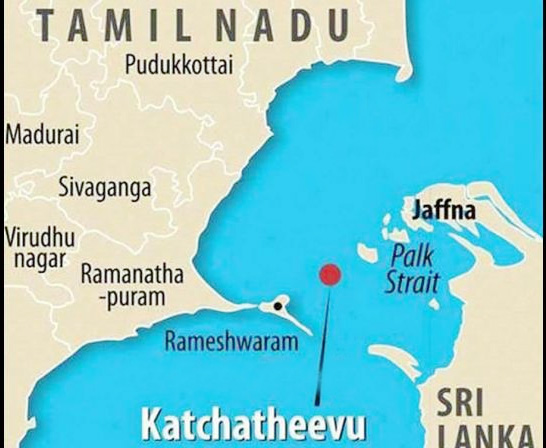
- The small islet of Katchatheevu, hitherto used by the Indian fishermen for sorting their catch and drying their nets, fell on the other side of the IMBL.
- Fishermen often risk their lives and cross the IMBL rather than return empty-handed, but the Sri Lankan Navy is on alert, and have either arrested or destroyed fishing nets and vessels of those who have crossed the line.
- However, the treaties failed to factor in the hardship of thousands of traditional fishermen who were forced to restrict themselves to a meagre area in their fishing forays.
- Steps Taken:
- The IMBL is imaginary, but it was geo-tagged and is visible to the fishermen, due to Global Positioning System (GPS) sets.
- Deep Sea Fishing Scheme:
- Promoted as an alternative to bottom trawling by Tamil Nadu’s fishermen off the Palk Bay, the scheme envisages the provision of 2,000 deep sea fishing boats in place of trawlers by 2019-20, which will be the third and final year of implementation of the scheme.
- It aims to put an end to disputes arising between the two countries.
- It has been taken up under the ‘Blue Revolution’ scheme.
Way Forward
- India needs to focus more on its traditional and cultural ties to improve relations with Sri Lanka.
- Starting ferry services between India and Sri Lanka can improve people to people linkages.
- Mutual recognition of each other's concerns and interests can improve the relationship between both countries.
Biodiversity & Environment
Yamuna’s High Ammonia Level
Why in News
High levels of ammonia in Yamuna is resulting in frequent disruption to Delhi’s water supply.
Key Points
- Recently, ammonia levels shot up to 7.3 parts per million (ppm) at some places.
- When the concentration rises beyond the Delhi Jal Board’s (DJB’s) treatment capacity of 0.9 ppm, water production has to be stopped or reduced in water treatment plants.
- As per the Bureau of Indian Standards (BIS), the acceptable maximum limit of ammonia in drinking water is 0.5 ppm.
- Causes of Pollution in Yamuna:
- Industrial Pollution:
- The Yamuna flows into Delhi from Haryana and the state has industrial units in Sonipat (on the banks of Yamuna). Ammonia is used as an industrial chemical in the production of fertilisers, plastics and dyes.
- Mixing of drains:
- Mixing of two drains carrying drinking water and sewage or industrial waste, or both, in Sonipat. The two drains often mix due to overflow or damage to the wall that separates them.
- Industrial Pollution:
- Effects of Rising Ammonia:
- Ammonia reduces the amount of oxygen in water as it is transformed to oxidised forms of nitrogen. Hence, it also increases Biochemical oxygen demand (BOD).
- Water pollution by organic wastes is measured in terms of BOD.
- If the concentration of ammonia in water is above 1 ppm, it is toxic to fishes.
- In humans, long term ingestion of water having ammonia levels of 1 ppm or above may cause damage to internal organs.
- Ammonia reduces the amount of oxygen in water as it is transformed to oxidised forms of nitrogen. Hence, it also increases Biochemical oxygen demand (BOD).
- Solution:
- Ozone-based units to treat ammonia levels up to 4 ppm should be installed at Water Treatment Plants.
- The laying of a conduit pipeline to separate drain carrying potable water and sewage water.
- The National Green Tribunal-appointed Yamuna Monitoring Committee has also said that fast-track approvals should be given to build a conduit.
- The Committee had also recommended to the Ministry of Jal Shakti earlier this year to rework the 1994 water sharing pact between Uttarakhand, Himachal Pradesh, Haryana, Delhi and UP to revive the river by releasing more fresh water into it.
Ammonia
- Its chemical formula is NH3.
- It is a colourless gas and is used as an industrial chemical in the production of fertilisers, plastics, synthetic fibres, dyes and other products.
- It occurs naturally in the environment from the breakdown of organic waste matter, and may also find its way to ground and surface water sources through industrial effluents, contamination by sewage or through agricultural runoff.
Yamuna
- The river Yamuna, a major tributary of river Ganges, originates from the Yamunotri glacier near Bandarpoonch peaks in the Mussoorie range of the lower Himalayas in Uttarkashi district of Uttarakhand.
- It meets the Ganges at the Sangam in Prayagraj, Uttar Pradesh after flowing through Uttarakhand, Himachal Pradesh, Haryana and Delhi.
- Length: 1376 km
- Important Dam: Lakhwar-Vyasi Dam (Uttarakhand), Tajewala Barrage Dam (Haryana) etc.
- Important Tributaries: Chambal, Sindh, Betwa, Ken, Tons, Hindon.
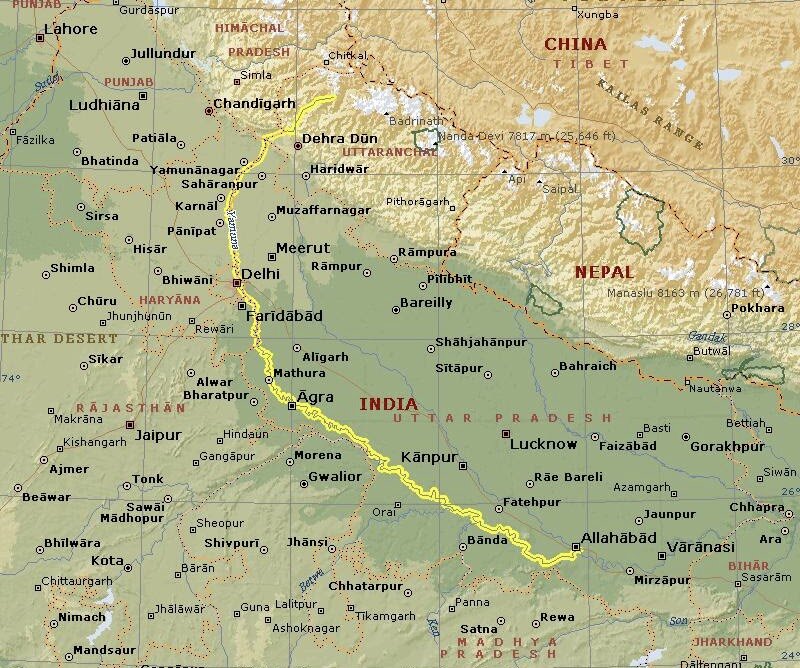
Governance
Digital India Awards 2020
Why in News
Recently, the President of India has conferred Digital India Awards 2020.
Key Points
- About the Awards:
- Digital India Awards have been institutionalized under the ambit of National Portal of India to honor exemplary initiatives/practices in Digital-Governance.
- National Portal of India: It is a Flagship Project to facilitate single window access to Government Information and Services in cyberspace.
- Digital-Governance: It is a framework for establishing accountability, roles, and decision-making authority for an organization's digital presence.
- These are conducted by the National Informatics Centre (NIC) under the Ministry of Electronics & Information Technology (MeitY).
- The Awards have been held for 5 seasons earlier, in 2009, 2012, 2014, 2016 & 2018. The Awards were initially known as Web Ratna Awards until 2014 and were re-named Digital India Awards from the 2016 season.
- Digital India Awards have been institutionalized under the ambit of National Portal of India to honor exemplary initiatives/practices in Digital-Governance.
- Awards 2020:
- 22 digital governance initiatives/products by Government entities under seven categories received Digital India Awards 2020 for designing and implementing innovative citizen-centric digital solutions and improving the ease of living for all citizens.
- 'Innovation in Pandemic award’ was introduced this year.
- The award also acknowledges States and Union Territories that display exemplary initiative in establishing a comprehensive digital presence in sectors like health, labour, finance, social justice and environment, leading to the accomplishment of Sustainable Development Goals (SDG).
- 22 digital governance initiatives/products by Government entities under seven categories received Digital India Awards 2020 for designing and implementing innovative citizen-centric digital solutions and improving the ease of living for all citizens.
- Notable Winners:
- E-committee of Supreme court of India:
- E-Courts project visioned and implemented by the e-Committee along with Department of Justice and NIC is a Mission Mode Project of Government of India.
- Citizens can access case status, causelist court orders anywhere, any time through e-courts services website, mobile app, sms email services from the 3,293 court complexes.
- Arogya Setu:
- It is a mobile application developed by the Government of India to connect essential health services with the people of India in a fight against Covid-19.
- The App is aimed at augmenting the initiatives of the Government of India, particularly the Department of Health, in proactively reaching out to and informing the users of the app regarding risks, best practices and relevant advisories pertaining to the containment of Covid-19.
- eOffice:
- It is a Mission Mode Project under the National E-Governance Plan, developed and implemented by NIC.
- It is a digital workplace solution. The vision of eOffice is to achieve a simplified, responsive, effective and transparent working of all government offices.
- eSanjeevani:
- It is a digital platform of the Ministry of Health & Family Welfare.
- It has enabled two types of telemedicine services viz. Doctor-to-Doctor (eSanjeevani) and Patient-to-Doctor (eSanjeevani OPD) Tele-consultations.
- Bihar Sahayata Mobile App:
- It was an innovative initiative to transfer money directly to the bank accounts of 21 lakh stranded migrant workers outside the state.
- Madhya Pradesh Labour Department’s Pravasi Shramik and Rojgar Setu Portals:
- These gateways have been recognised for facilitating identification, registration, skilling plus employment of migrants and other workers during the novel coronavirus pandemic.
- States:
- Haryana, Tamil Nadu, Uttar Pradesh and West Bengal won the Award under ‘Excellence in Digital Governance - State / UT’ category.
- E-committee of Supreme court of India:
Governance
Assam’s Bill on Madrasa Conversion
Why in News
The Assam Assembly has recently passed a Bill to convert state-run madrasas into regular schools - removing them from the status of centres for religious education.
- The Cabinet has also decided that the existing provincialised Sanskrit tols will be converted to “study centres, research centres and institutions to study the Certificate/ Diploma/ Degree courses” to be started by Kumar Bhaskar Varma Sanskrit and Ancient Studies University, Nalbari with effect from 1st April 2022.
Key Points
- The Assam Repealing Bill, 2020 was brought to repeal two existing Acts:
- The Assam Madrassa Education (Provincialisation) Act, 1995.
- The Assam Madrassa Education (Provincialisation of Services of Employees and Re-Organisation of Madrassa Educational Institutions) Act, 2018.
- The new legislation also covers private-run madrasas that are run under the state boards although private-run madrasas which are not under any state board will remain outside its purview.
- In English, the term madrasah or "madrasa" usually refers more narrowly to Islamic institutions of learning.
- Historians and other scholars also employ the term to refer to historical madrasah institutions throughout the Muslim world, which is to say a college/school where Islamic law was taught along with other secondary subjects.
- The Madrasas run by the Board of Secondary Education, Assam (SEBA) will have ‘madrasa’ dropped from their names and function as regular schools.
- The staff of the madrasas, especially those teachers teaching religious subjects, will be retained. They will be either trained to teach other subjects or in some other capacity.
- It is said to be a move to empower the Muslim community.
- The bill is being said to follow the ideals of B R Ambedkar. He had said that religious instruction should have no place in curriculum.
- The Quran should not be taught on government expenditure because the Bible or the Bhagavad Gita or texts of other religions are not taught on it.
- The government spends Rs. 260 crore on madrasas and the Sanskrit “tols” (sanskrit learning centres) annually.
- Further, secularism is one of the ‘basic features’ of the Constitution.
- The government aspires that in the future a law is made to make private madrasas teach science, maths and other subjects along with religious subjects.
Governance
Protests Against Eco-sensitive Zones in Narmada District
Why in News
Recently, tribal communities in Gujarat have been protesting against the Ministry of Environment, Forest and Climate Change (MoEFCC) order classifying 121 villages around the Shoolpaneshwar Wildlife Sanctuary in Narmada district as eco-sensitive zones.
- They have appealed to the centre to withdraw the notification to mitigate the protests.
- Tribes like Tadvi and Vasava have been concerned ever since Kevadia village of Narmada district was developed into a tourism circuit around the Statue of Unity (SoU).
Key Points
- Reasons Behind Protests:
- Land falling in the eco-sensitive zone, including land used for agricultural use and plots reserved for parks, cannot be transferred for non-agricultural use for commercial, industrial or residential purposes.
- Any land that needs to be transferred can be done so only after approval from the state government.
- A process has been initiated to include the state government as the co-owner of the land in the 121 villages.
- Tribals are apprehensive of the order as they were not taken into confidence.
- The notification, combined with the formation of the SoU Tourism Authority (SoUTA or also known as the SoU Area Development and Tourism Governance Authority), has increased administrative needs owing to the booming tourism and has left tribals in a state of mistrust and fear.
- They feel the simultaneous implementation of the two government decisions could dilute the “power” vested with villagers under the Panchayat (Extension of Scheduled Areas) Act (PESA Act), 1996, implemented in areas notified under Schedule V of the Constitution.
- Fifth and Sixth Schedules provide for alternate or special governance mechanisms for certain schedule areas.
- Land falling in the eco-sensitive zone, including land used for agricultural use and plots reserved for parks, cannot be transferred for non-agricultural use for commercial, industrial or residential purposes.
- Panchayat (Extension of Scheduled Areas) Act, 1996:
- Gujarat notified the State PESA Rules in January 2017, applicable in 4,503 gram sabhas in eight districts of the state.
- The Act promised a separate security force for the gram sabhas that would have complete power to decide their issues.
- The provisions of the law deem the gram sabhas as “most competent” to deal with matters related to their territories for safeguarding their customs, traditions as well as the natural resources in the tribal areas.
- However, the Act has not been enforced in letter and spirit, according to legal experts.
Statue of Unity Tourism Authority
- The government passed the SoU Area Development and Tourism Governance Authority or the SoU Tourism Authority (SoUTA) Bill in 2019.
- The Bill sets aside Rs. 10 crore from the consolidated fund of the state for the discharge of functions and duties by SoUTA.
- While activists and legal experts feel the Act will overpower the provisions of PESA, officials say rules of SoUTA are yet to be clarified.
- Functions:
- It will largely work as a local body that will prepare and execute a development plan or a town planning scheme, remove encroachments and provide civic amenities like water supply, transportation, power supply, drainage, hospitals, medical services, schools, public parks, markets, shopping places, and disposal of waste, among others.
- Powers:
- Acquiring immovable property under the Right to Fair Compensation and Transparency in Land Acquisition, Rehabilitation and Resettlement Act, 2013.
- Taking punitive action against those violating/encroaching it.
- Defining the limits of the tourism development area.
- Persons authorised can enter any land or building between sunrise and sunset by giving its occupant a notice of at least 24 hours.
- Shields the authority and its members from any legal proceeding or prosecution for anything which is in good faith done or intended to be done in pursuance of the provisions of this Act or any rules or regulations made thereunder.
- Assistance:
- Police can assist the authority in prohibiting any nuisance being caused or prevent any such activity, process, the operation being carried out, if it opines that it will damage or deteriorate the “tourism potentiality” of the area.
- Expenses and costs incurred, if any, in removing or abating such nuisance, shall be recovered as an arrear of land revenue from the person who has caused such nuisance.
- Punishments:
- Persons who fail to comply with directions given by the authority shall be punishable with imprisonment for up to a month or with a fine up to Rs. 50,000, or both. The offence will also be treated as “cognisable and non-bailable”.
Shoolpaneshwar Wildlife Sanctuary
- It was first declared a protected area in 1982.
- An area of 150.87 sq. km was called the ‘Dumkhal Sanctuary’, specifically created for the protection of sloth bears.
- In the years 1987 and 1989, more land was attributed to conservation and the area of the sanctuary enlarged to 607.70 sq km. It was then renamed ‘Shoolpaneshwar Sanctuary’.
- Flora: It is made up of a mixed forest of teak, riverine forest and deciduous dry jungles.
- Fauna: Sloth bear, Leopard, Rhesus macaque, Four Horned antelope, Barking deer, Pangolin, Herpetofauna, birds including Alexandrine parakeet.

